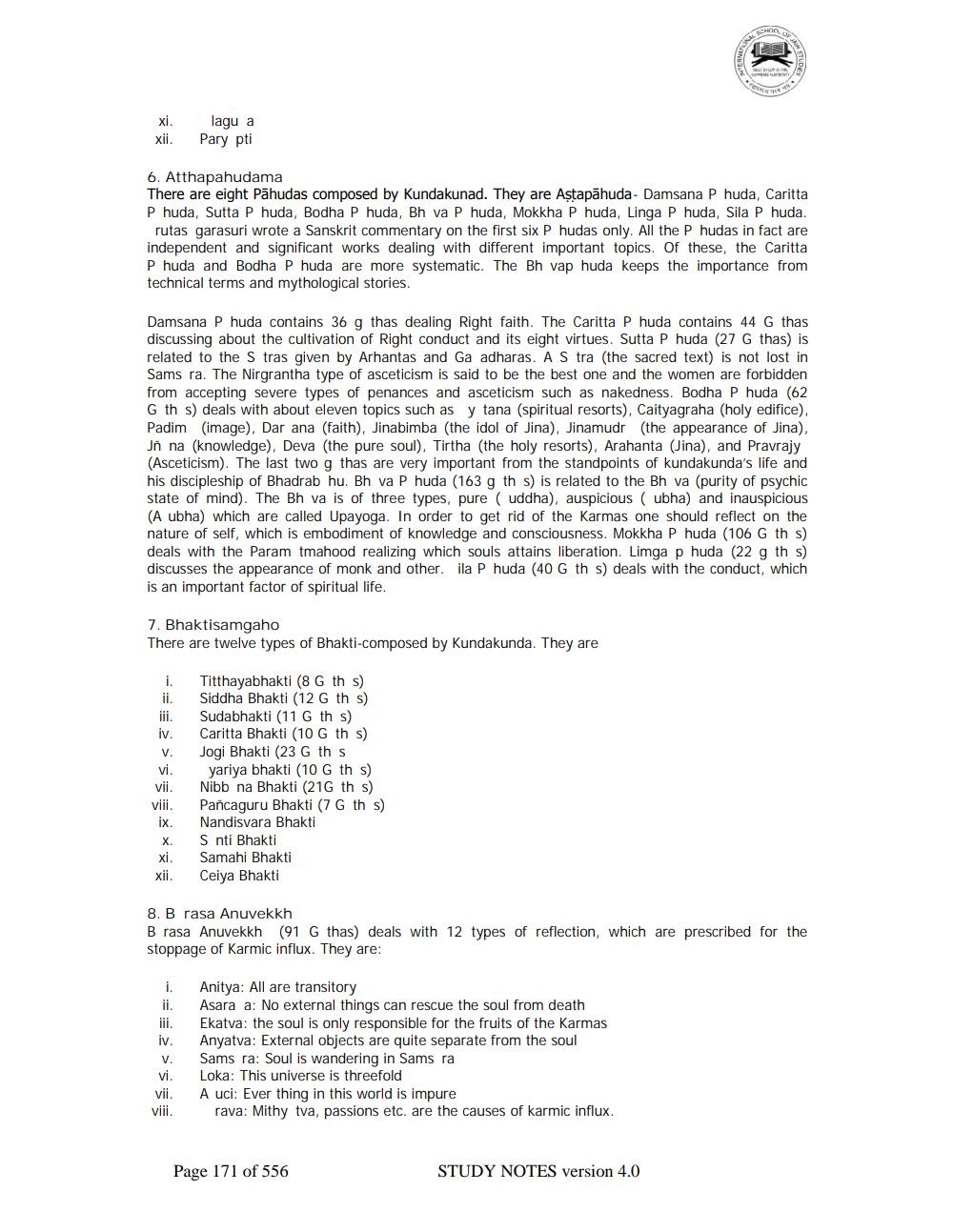________________
xi.
xii.
6. Atthapahudama
There are eight Pāhudas composed by Kundakunad. They are Aṣṭapāhuda- Damsana P huda, Caritta P huda, Sutta P huda, Bodha P huda, Bh va P huda, Mokkha P huda, Linga P huda, Sila P huda. rutas garasuri wrote a Sanskrit commentary on the first six P hudas only. All the P hudas in fact are independent and significant works dealing with different important topics. Of these, the Caritta P huda and Bodha P huda are more systematic. The Bh vap huda keeps the importance from technical terms and mythological stories.
Damsana P huda contains 36 g thas dealing Right faith. The Caritta P huda contains 44 G thas discussing about the cultivation of Right conduct and its eight virtues. Sutta P huda (27 G thas) is related to the S tras given by Arhantas and Ga adharas. A S tra (the sacred text) is not lost in Sams ra. The Nirgrantha type of asceticism is said to be the best one and the women are forbidden from accepting severe types of penances and asceticism such as nakedness. Bodha P huda (62 G th s) deals with about eleven topics such as y tana (spiritual resorts), Caityagraha (holy edifice), Padim (image), Dar ana (faith), Jinabimba (the idol of Jina), Jinamudr (the appearance of Jina), Jň na (knowledge), Deva (the pure soul), Tirtha (the holy resorts), Arahanta (Jina), and Pravrajy (Asceticism). The last two g thas are very important from the standpoints of kundakunda's life and his discipleship of Bhadrab hu. Bh va P huda (163 g th s) is related to the Bh va (purity of psychic state of mind). The Bh va is of three types, pure (uddha), auspicious (ubha) and inauspicious (A ubha) which are called Upayoga. In order to get rid of the Karmas one should reflect on the nature of self, which is embodiment of knowledge and consciousness. Mokkha P huda (106 G th s) deals with the Param tmahood realizing which souls attains liberation. Limga p huda (22 g th s) discusses the appearance of monk and other. ila P huda (40 G th s) deals with the conduct, which is an important factor of spiritual life.
7. Bhaktisamgaho
There are twelve types of Bhakti-composed by Kundakunda. They are
i.
ii.
iii.
iv.
V.
vi.
vii.
viii.
ix.
X.
xi.
xii.
i.
ii.
lagu a Pary pti
iii.
iv.
V.
vi.
8. B rasa Anuvekkh
B rasa Anuvekkh (91 G thas) deals with 12 types of reflection, which are prescribed for the stoppage of Karmic influx. They are:
vii.
viii.
Titthayabhakti (8 G th s)
Siddha Bhakti (12 G ths) Sudabhakti (11 G ths) Caritta Bhakti (10 G th s) Jogi Bhakti (23 G th s yariya bhakti (10 G th s) Nibb na Bhakti (21G th s)
Pancaguru Bhakti (7 G th s)
Nandisvara Bhakti
S nti Bhakti
Samahi Bhakti
Ceiya Bhakti
Anitya: All are transitory
Asara a: No external things can rescue the soul from death Ekatva: the soul is only responsible for the fruits of the Karmas Anyatva: External objects are quite separate from the soul
Sams ra: Soul is wandering in Sams ra
Loka: This universe is threefold
VERSAC
A uci: Ever thing in this world is impure
rava: Mithy tva, passions etc. are the causes of karmic influx.
Page 171 of 556
STUDY NOTES version 4.0




